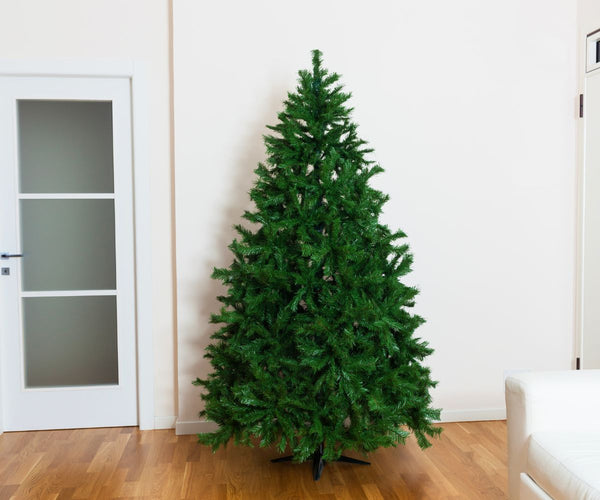Do you own an artificial plant and wonder how to keep it clean? Many people appreciate artificial plants for their low maintenance, requiring no water and offering a constant touch of greenery and peace. Some are made so expertly, they're almost indistinguishable from their living counterparts.
However, without regular care, these artificial beauties can lose their vibrant look as dust and dirt build up, diminishing their "natural" appearance and luster. It's important to clean them regularly to remove dust and dirt. In this blog, we'll guide you through the proper techniques for cleaning artificial plants, ensuring they remain a beautiful part of your home.
Most Common Methods for Cleaning Artificial Plants
There are numerous effective techniques for cleaning artificial plants. Let's explore these methods to identify the most suitable ones for your artificial greenery!
1. Water and Microfiber Cloth
Using plain water and a microfiber cloth is the simplest and most efficient method for cleaning artificial plants, ideal for quick refreshes. It's advisable to use water at room temperature or cold to prevent any damage to the plant. For plants with significant dirt buildup, a solution of mild soap mixed with water can be effective. Gently wipe the stains with a microfiber cloth, then rinse with plain water to remove any soap residue. Once cleaned, it is recommended to dry the plant completely, so wrapping it in a towel and gently patting it dry is an effective drying technique.
2. Hair Dryer
Employing a hair dryer offers a swift method to remove dust from an artificial plant. Set it to a low or cool setting to prevent damage, as high temperatures could harm the plant. However, it’s best to do this outdoors or in an area where the blown-off dust can be easily cleaned up.
3. Dusting Brush
A dusting brush is another commonly used tool for cleaning artificial plants. Select a brush that is clean, free of dirt or residues, and equipped with soft bristles to avoid damaging the plant. Support the plant with one hand while cleaning to prevent it from tipping over. Focus on hard-to-reach areas and crevices where dust is likely to accumulate.
4. Salt
Cleaning artificial flowers with salt involves a couple of methods. One technique is mixing 1 tablespoon of salt in 1 liter of room temperature water, dipping the artificial flower, and gently cleaning. Afterwards, rinse the flower with plain water to remove any remaining salt and dirt.
Second technique entails placing artificial flowers in a plastic bag with some salt, sealing the bag, and gently shaking for about a minute. The salt acts as an abrasive to help remove dust and dirt from the plant's surface. Afterwards, remove the flower from the bag and brush off any remaining salt. This technique can effectively rejuvenate the appearance of artificial flowers by removing stubborn dust and grime.
Get Hands-On with Specific Greenery
In this section, we go through cleaning methods that demand a bit of extra attention or special guidance. Continue reading to discover the techniques for cleaning artificial trees, fabric flowers, and paper flowers effectively.
1. Artificial Trees

The optimal approach for cleaning an artificial tree involves taking it outside, if possible, and gently shaking it to dislodge as much dust as possible. A larger dusting brush, or microfiber cloth can be used to wipe away surface dust from the branches and leaves effectively. For more targeted dirt removal, employing a vacuum cleaner with a soft brush attachment can effectively clean hard-to-reach parts such as branches and crevices.
You can also take advantage of rainy weather by placing artificial trees or larger plants outside allowing the rain to naturally wash away dirt. Once clean, dry the plants thoroughly before returning them to their place.
2. Textile Flowers

There are several methods for cleaning textile flowers, including dusting with a feather duster or using a hairdryer on a low setting. A more time-consuming but effective method involves using a damp microfiber cloth. If the flower is heavily soiled, gently washing it with soap and water may be necessary. Always air dry the flowers before returning them to their place. Note that silk flowers are typically sensitive to water, so immersing them in water is not recommended as it could lead to discoloration or deformation of the material.
3. Paper Flowers

Cleaning paper flowers requires a different approach due to the material's sensitivity to water. Avoid using damp or wet cloths and do not submerge paper flowers in water, as this could cause the paper to tear or the color to change. Instead, dust them gently with a soft brush or duster, or use a hairdryer on a cool setting to blow away dust without causing damage.
FAQ - Artificial Plants
How often should you clean artificial plants?
Cleaning artificial plants should be done on a regular basis, ideally monthly. Neglecting regular cleanings allows dust to gather, making it increasingly difficult to clean over time. The frequency of cleaning may need to be adjusted depending on the amount of dust in your living space, with dust-prone areas necessitating more frequent care.
How do you clean dirty artificial trees?
To clean artificial trees, it's best to take them outside and gently shake off the dust. For surface dust, use a large brush, dusting brush, or microfiber cloth. Utilize rainy weather by letting the rain naturally clean the trees. For targeted cleaning, a vacuum with a soft brush attachment works well on branches and crevices. For very dirty trees, a mild soap solution can help tackle stubborn stains, but handle the foliage gently to avoid damage.
How to clean silk flowers?
Silk flowers require careful cleaning. Dust them with a feather duster or use a hairdryer on a low setting. For more thorough cleaning, a damp microfiber cloth is effective. If the flowers are very dirty, gently wash them with soap and water, but avoid submerging them as this could lead to discoloration or damage. Always air dry silk flowers before placing them back.
How do you clean paper flowers?
Since paper is highly sensitive to water, avoid using damp cloths or submerging paper flowers in water. Dust them gently with a soft brush or use a hairdryer on a cool setting to blow away dust without damaging them.
How do you make artificial plants look new?
To rejuvenate artificial plants, start by thoroughly dusting them. For leaves that are discolored or damaged, trim them off carefully. Enhance their color and shine with a special spray made for artificial plants.


